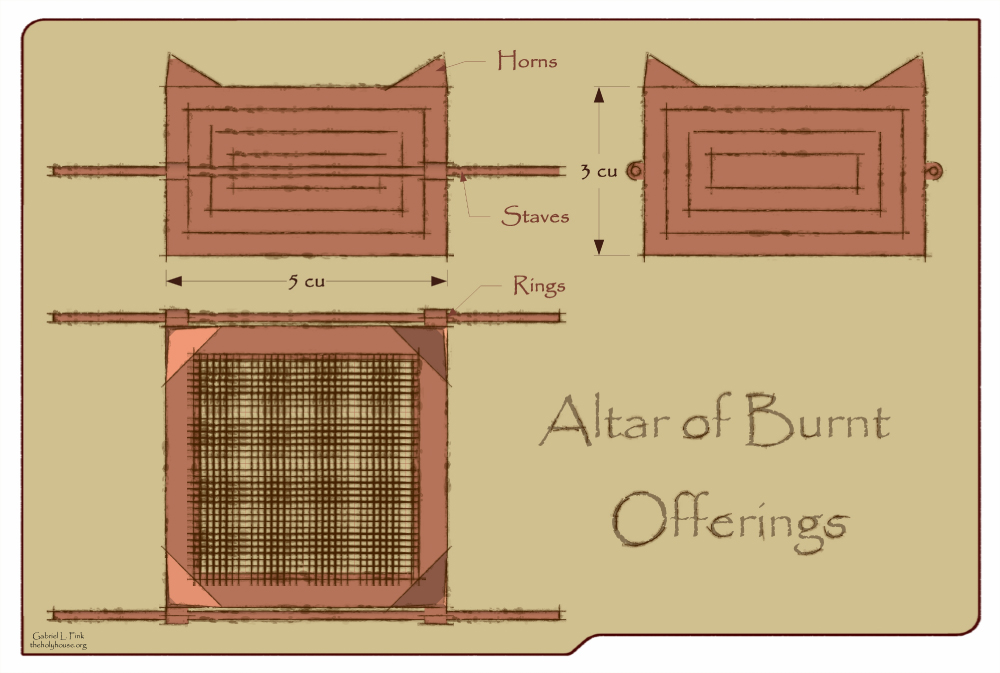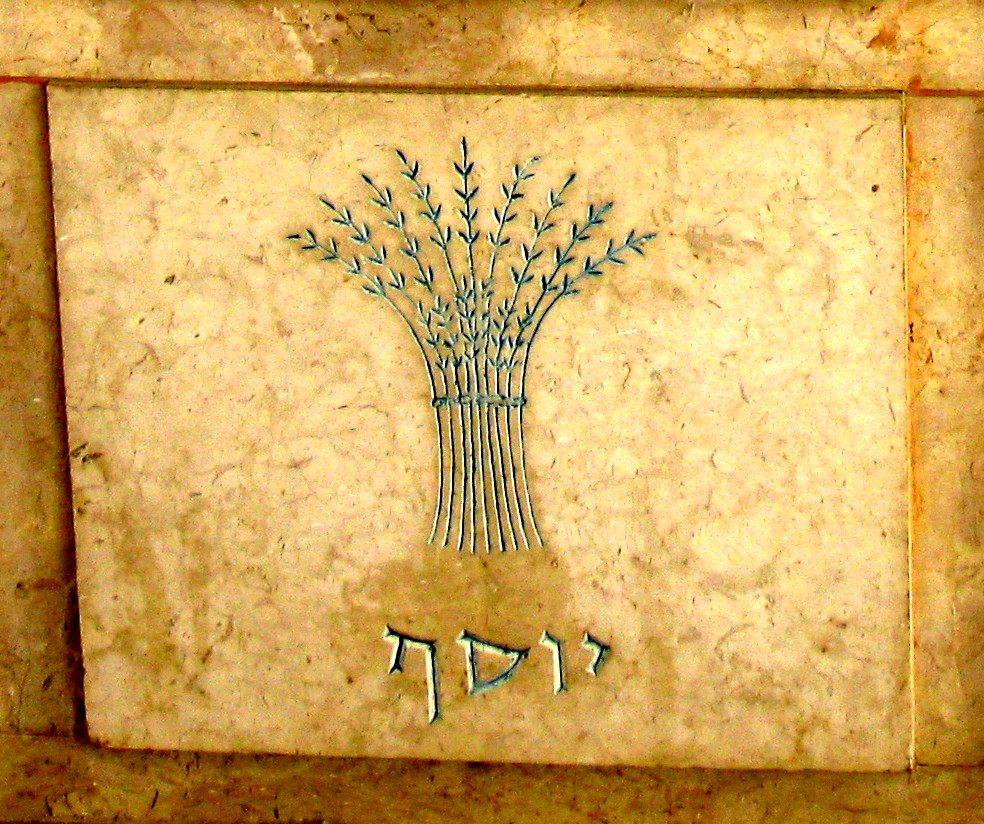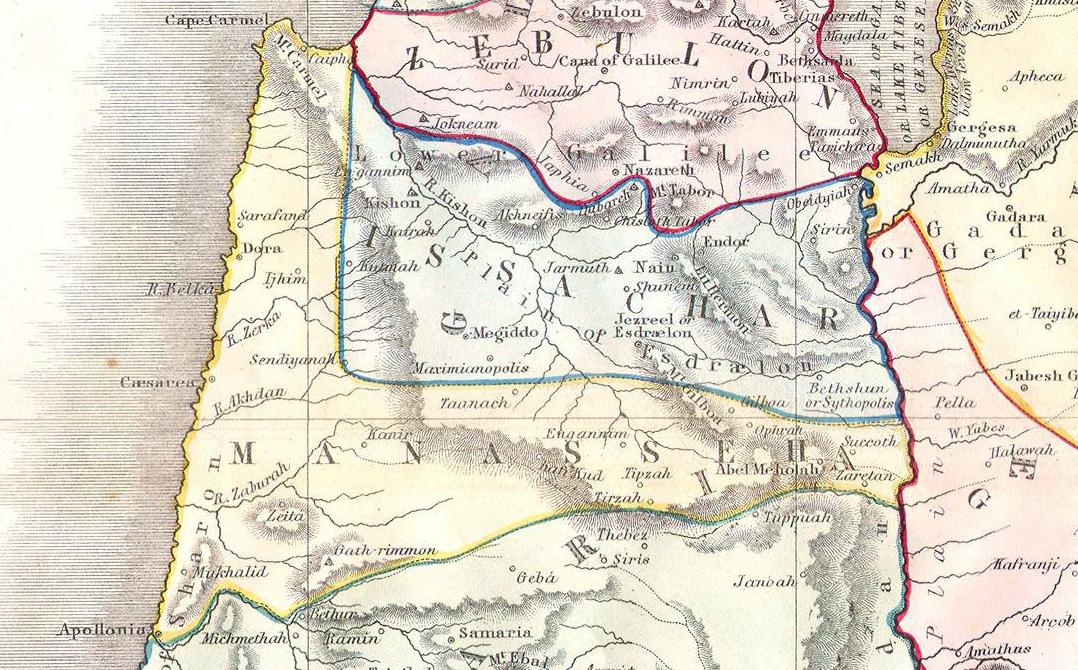|
Mount Ebal
Mount Ebal ( he, ''Har ʿĒyḇāl''; ar, جبل عيبال ''Jabal ‘Aybāl'') is one of the two mountains in the immediate vicinity of the city of Nablus in the West Bank (biblical ''Shechem''), and forms the northern side of the valley in which Nablus is situated, the southern side being formed by Mount Gerizim. The mountain is one of the highest peaks in the West Bank and rises to above sea level, some higher than Mount Gerizim.Matthew Sturgis, ''It Ain't Necessarily So'', Mount Ebal is approximately in area, and is composed primarily of limestone.Cheyne and Black, ''Encyclopedia Biblica'' The slopes of the mountain contain several large caverns which were probably originally quarries, and at the base towards the north are several tombs.''Jewish Encyclopedia'' Biblical account In advance of the Israelites' entry to the Promised Land, records Moses' direction that "when the Lord your God has brought you into the land which you go to possess, that you shall put the ble ... [...More Info...] [...Related Items...] OR: [Wikipedia] [Google] [Baidu] |
State Of Palestine
Palestine ( ar, فلسطين, Filasṭīn), Legal status of the State of Palestine, officially the State of Palestine ( ar, دولة فلسطين, Dawlat Filasṭīn, label=none), is a state (polity), state located in Western Asia. Officially governed by the Palestine Liberation Organization (PLO), it claims the West Bank, including East Jerusalem, and the Gaza Strip as its territory, though the entirety of that territory has been Israeli-occupied territories, occupied by Israel since the 1967 Six-Day War. As a result of the Oslo Accords of 1993–1995, the West Bank is currently divided into 165 Palestinian enclaves that are under partial Palestinian National Authority (PNA) rule; the remainder, including 200 Israeli settlement, Israeli settlements, is under Area C (West Bank), full Israeli control. The Gaza Strip has been ruled by the militant Islamic group Hamas and has been subject to Blockade of the Gaza Strip, a long-term blockade by Egypt and Israel since 2007. After W ... [...More Info...] [...Related Items...] OR: [Wikipedia] [Google] [Baidu] |
Altar (Bible)
Altars ( he, מִזְבֵּחַ, ''mizbeaḥ'', "a place of slaughter or sacrifice") in the Hebrew Bible were typically made of earth () or unwrought stone (). Altars were generally erected in conspicuous places (; ; ; ; ). The first altar recorded in the Hebrew Bible is that erected by Noah (). Altars were erected by Abraham (; ; ;), by Isaac (), by Jacob (; ), by Moses (), and by Saul (1 Samuel 14:35). After the theophany on biblical Mount Sinai, in the Tabernacle–and afterwards in the Temple–only two altars are mentioned: the Altar of Burnt Offering, and the Altar of Incense. Altar of burnt offering The first altar was the Altar of Burnt Offering (''mizbeach ha'olah''; ), also called the Brasen Altar (), the Outer Altar (''mizbeach hachitzona''), the Earthen Altar (''mizbeach adamah''), the Great Altar (''mizbeach hagedola'') and the Table of the Lord (). This was the outdoor altar and stood in the Court of the Priests, between the Temple and the Court of Israel, and upon wh ... [...More Info...] [...Related Items...] OR: [Wikipedia] [Google] [Baidu] |
Tribe Of Gad
According to the Bible, the Tribe of Gad () was one of the Twelve Tribes of Israel who, after the Exodus from Egypt, settled on the eastern side of the Jordan River. It is one of the ten lost tribes.Tribe still originated from the original Hebrew Israelites. Biblical narrative After the conquest of the land by Joshua until the formation of the first Kingdom of Israel in 1050 BC, the Tribe of Gad was a part of a loose confederation of Israelite tribes. No central government existed, and in times of crisis the people were led by ad hoc leaders known as Judges (see the Book of Judges). Nahash appears abruptly as the attacker of Jabesh-Gilead, which lay outside the territory he laid claim to. Having subjected the occupants to a siege, the population sought terms for surrender, and were told by Nahash that they had a choice of death (by the sword) or having their right eyes gouged out. The population obtained seven days' grace from Nahash, during which they would be allowed to se ... [...More Info...] [...Related Items...] OR: [Wikipedia] [Google] [Baidu] |
Tribe Of Reuben
According to the Hebrew Bible, the Tribe of Reuben () was one of the twelve tribes of Israel. Unlike the majority of the tribes, the land of Reuben, along with that of Tribe of Gad, Gad and half of Manasseh (tribal patriarch), Manasseh, was on the eastern side of the Jordan and shared a border with Moab. According to the biblical narrative, the Tribe of Reuben descended from Reuben (son of Jacob), Reuben, the eldest son of the patriarch Jacob. Reuben, along with nine other tribes, is reckoned by the Bible as part of the Kingdom of Israel (Samaria), northern kingdom of Israel, and disappears from history with the demise of that kingdom in c. 723 BC. Tribal territory The Book of Joshua records that the tribes of Reuben, Tribe of Gad, Gad and half of Tribe of Manasseh, Manasseh were allocated land by Moses on the Transjordan (Bible), eastern side of the Jordan River and the Dead Sea. The Tribe of Reuben was allocated the territory immediately east of the Dead Sea, reaching from the ... [...More Info...] [...Related Items...] OR: [Wikipedia] [Google] [Baidu] |
Tribe Of Benjamin
According to the Torah, the Tribe of Benjamin () was one of the Twelve Tribes of Israel. The tribe was descended from Benjamin, the youngest son of the patriarch Jacob (later given the name Israel) and his wife Rachel. In the Samaritan Pentateuch the name appears as ''Binyamīm'' (). The Tribe of Benjamin, located to the north of Judah but to the south of the Kingdom of Israel, is significant in biblical narratives as a source of various Israelite leaders, including the first Israelite king, Saul, as well as earlier tribal leaders in the period of the Judges. In the period of the judges, they feature in an episode in which a civil war results in their near-extinction as a tribe. After the brief period of the united kingdom of Israel, Benjamin became part of the southern Kingdom of Judah following the split into two kingdoms. After the destruction of the northern kingdom, Benjamin was fully absorbed into the southern kingdom. After the destruction of Judah by the Babylonians in ... [...More Info...] [...Related Items...] OR: [Wikipedia] [Google] [Baidu] |
Tribe Of Joseph
The Tribe of Joseph is one of the Tribes of Israel in biblical tradition. Since Ephraim and Manasseh (often called the "two half-tribes of Joseph") together traditionally constituted the tribe of Joseph, it was often not listed as one of the tribes, in favour of Ephraim and Manasseh being listed in its place; consequently it was often termed the House of Joseph, to avoid the use of the term ''tribe''. According to the Targum Pseudo-Jonathan, the ensign of both the House of Joseph (Ephraim and Manasseh) and the Tribe of Benjamin was of silk of three colours, corresponding with the precious stones in the priestly breastplate, leshem, shavo, and aḥlamah; and upon it expressed and set forth the names of the three tribes, Ephraim, Manasseh and Benjamin; having the figure of a young man upon it, with the inscription: "''And the Cloud of the LORD was over them by day, when they set forward from the camp."'' (Numbers 10:34). There were obvious linguistic differences between at lea ... [...More Info...] [...Related Items...] OR: [Wikipedia] [Google] [Baidu] |
Tribe Of Issachar
According to the Hebrew Bible, the Tribe of Issachar () was one of the twelve tribes of Israel and one of the ten lost tribes. In Jewish tradition, the descendants of Issachar were seen as being dominated by religious scholars and influential in proselytism. The sons of Issachar, ancestors of the tribe, were Tola, Phuvah, Job and Shimron. Biblical narrative In the biblical narrative of the Book of Joshua, following the completion of the conquest of Canaan by the Israelite tribes, Joshua allocated the land among the twelve tribes. The territory allocated to Issachar stretched from the Jordan River in the east to Mount Carmel on the west, near to the Mediterranean coast, including the fertile Esdraelon plain between present-day Lower Galilee and Samaria. It was bounded on the east by East Manasseh, the south by West Manasseh, and the north by Zebulun and Naphtali. There is a consensus among scholars that the accounts in the Book of Judges are not historically reliable. Alternati ... [...More Info...] [...Related Items...] OR: [Wikipedia] [Google] [Baidu] |
Tribe Of Judah
According to the Hebrew Bible, the tribe of Judah (, ''Shevet Yehudah'') was one of the twelve Tribes of Israel, named after Judah, the son of Jacob. Judah was the first tribe to take its place in the Land of Israel, occupying the southern part of the territory. Jesse and his sons, including King David, belonged to this tribe. Biblical account The tribe of Judah, its conquests, and the centrality of its capital in Jerusalem for the worship of the god Yahweh figure prominently in the Deuteronomistic history, encompassing the books of Deuteronomy through II Kings, which most scholars agree was reduced to written form, although subject to exilic and post-exilic alterations and emendations, during the reign of the Judahite reformer Josiah from 641–609 BCE. According to the account in the Book of Joshua, following a partial conquest of Canaan by the Israelite tribes (the Jebusites still held Jerusalem),Kitchen, Kenneth A. (2003), ''On the Reliability of the Old Testament'' ( ... [...More Info...] [...Related Items...] OR: [Wikipedia] [Google] [Baidu] |
Tribe Of Levi
According to the Bible, the Tribe of Levi is one of the tribes of Israel, traditionally descended from Levi, son of Jacob. The descendants of Aaron, who was the first ''kohen gadol'' (high priest) of Israel, were designated as the priestly class, the Kohanim. The Tribe of Levi served particular religious duties for the Israelites and had political responsibilities as well. In return, the landed tribes were expected to give tithes to the Kohanim, the priests working in the Temple in Jerusalem, particularly the tithe known as the '' Maaser Rishon''. The Levites who were not Kohanim played music in the Temple or served as guards. When Joshua led the Israelites into the land of Canaan the Levites were the only Israelite tribe that received cities but were not allowed to be landowners, because "the Lord God of Israel is their inheritance, as he said to them" ( Book of Joshua, ). Some Biblical traditions point to the alien aspects of the Levites and their role as military troops. In thi ... [...More Info...] [...Related Items...] OR: [Wikipedia] [Google] [Baidu] |
Tribe Of Simeon
According to the Hebrew Bible, the Tribe of Simeon (; he, ''Šīm‘ōn'', "hearkening/listening/understanding/empathizing") was one of the twelve tribes of Israel. The Book of Judges locates its territory inside the boundaries of the Tribe of Judah. It is usually counted as one of the ten lost tribes, but as its territory was south of Judah and gradually being absorbed by Judah, it can not be considered one of the tribes of the Kingdom of Israel and would certainly not have been affected by the Assyrian sack of the kingdom. The biblical narrative has it coming into the land of Israel following the Exodus, while scholarly reconstructions have offered a variety of opinions as to its origins and early history. From the Book of Genesis until the Babylonian captivity, the Bible provides various details about its history, after which point it disappears from the record. A variety of extrabiblical traditional Jewish sources also provide additional material on the tribe. Territory ... [...More Info...] [...Related Items...] OR: [Wikipedia] [Google] [Baidu] |
Dead Sea Scrolls
The Dead Sea Scrolls (also the Qumran Caves Scrolls) are ancient Jewish and Hebrew religious manuscripts discovered between 1946 and 1956 at the Qumran Caves in what was then Mandatory Palestine, near Ein Feshkha in the West Bank, on the northern shore of the Dead Sea. Dating from the 3rd century BCE to the 1st century CE, the Dead Sea Scrolls are considered to be a keystone in the history of archaeology with great historical, religious, and linguistic significance because they include the oldest surviving manuscripts of entire books later included in the biblical canons, along with deuterocanonical and extra-biblical manuscripts which preserve evidence of the diversity of religious thought in late Second Temple Judaism. At the same time they cast new light on the emergence of Christianity and of Rabbinic Judaism. Most of the scrolls are held by Israel in the Shrine of the Book at the Israel Museum, but their ownership is disputed by Jordan due to the Qumran Caves' history: f ... [...More Info...] [...Related Items...] OR: [Wikipedia] [Google] [Baidu] |









